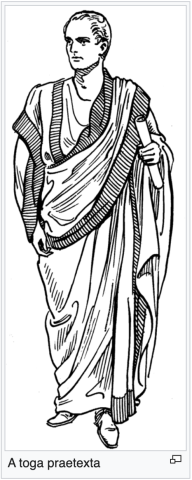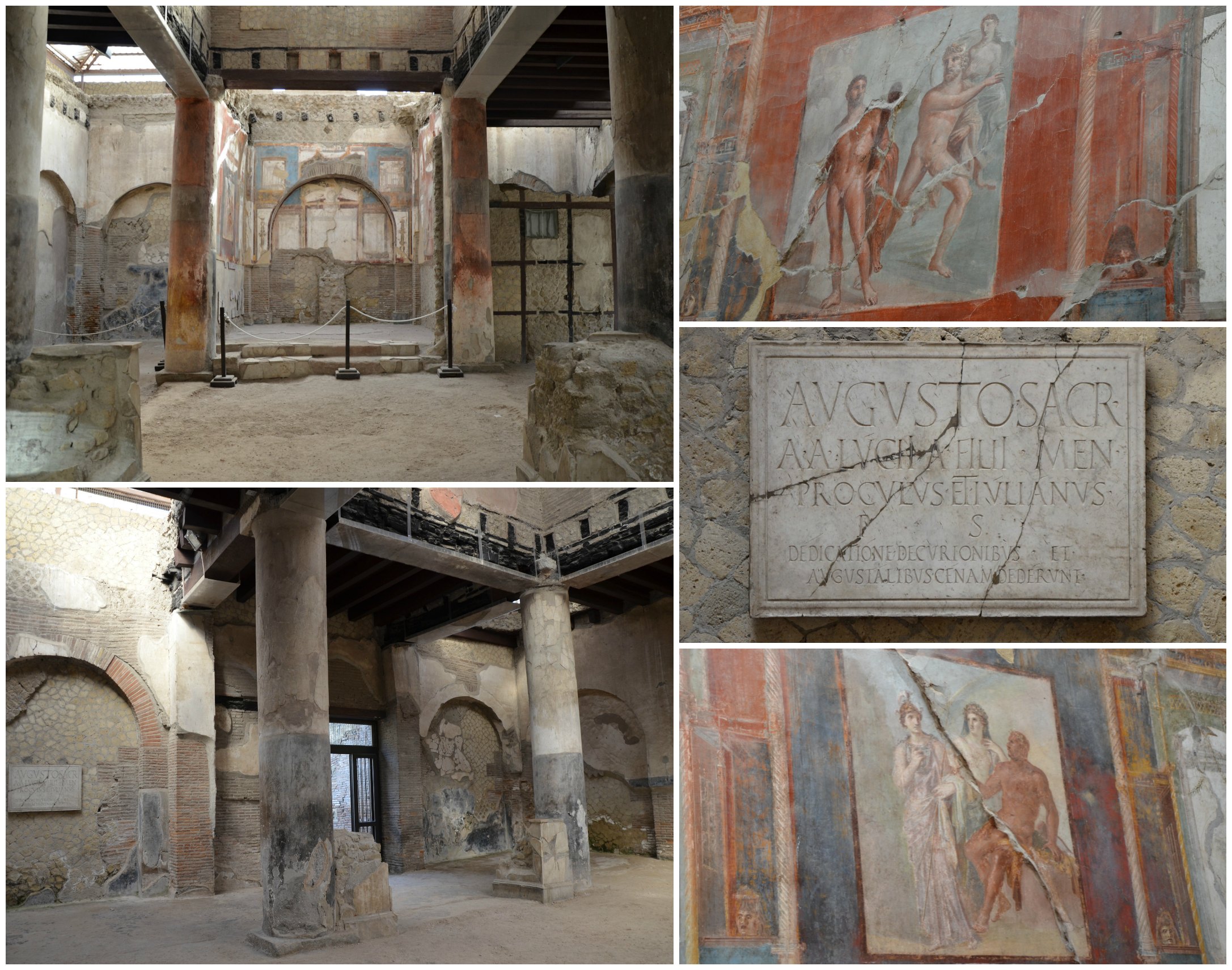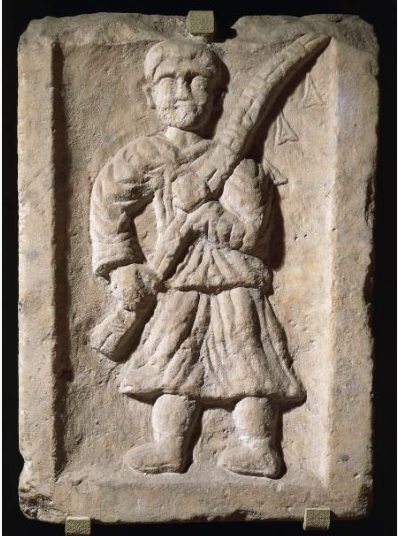
I started my search for more information about the man who dedicated a statue to his wife in Tarraco around the year 214, by focusing on his job title: Sevir Augustal. The Seviratus Augustalis was an urban institution of semi-official nature which was mainly held by wealthy freedmen in the first to the third century. Their functions were a cross between magistrate and priest for the cult of the Roman Emperor. There is not much documentation on what the Sevirs actually did. The impression I get is that the closest modern equivalent would be businessmen who formed a Rotary Club in order to carry out civic projects; what we know about the Seviratus Augustalis comes from what remains of their civic projects.
The Sevirs met in social halls that apparently were built just for that purpose. The most famous and best preserved of these is the one in Herculaneum. I quote from that link:
The hall housed the College of Augustales, a civic order of freedmen charged with the organization of the imperial cult…The large rectangular hall was paved in cocciopesto with four central columns supporting a flat roof. Leaning against the two front columns are statue bases. In the eighteenth century the statues, which had a dedication on their bases from the Augustales to the divine Caesar and divine Augustus, were carried away. At the rear, the central shrine was reached by two steps, and the dado of the shrine was faced with marble, the middle zones of the walls were painted with a cinnabar (bright red tinted with orange) background… To the right of the shrine… was formed the room of the custodian of the shrine, whose skeleton was found at the time of excavation lying on his bed…

Apparently, each college had about a dozen active members, with a few honorary members, and room for visitors. So up to twenty people would be dining together at a meal in a Sevir college. I found evidence that Roda de Bará had its own college of Augustales. If the man I’m looking for belonged to it, he would have traveled from Tarraco to Roda de Bará (a distance of about 25 km) at least once a month for meetings and banquets.
What did the Sevir Augustales look like? They were entitled to wear the Toga praetexta, a white toga with a broad purple stripe on its border, worn over a tunic with two broad, vertical purple stripes. It was formal costume for various types of people, including the Sevirs. Each Sevir was also entitled to two Lictors, or body guards. Lictors carried a fasces, a weapon with axe heads in it that symbolized their power to carry out an order of capital punishment. Here is a relief of a Lictor:

Now we have a picture of what our mystery man’s life was like. He was a former slave who once freed had become wealthy. He had privileges, like wearing the special toga, and was a member of a special social group. He had bodyguards, he invested in public works, and at least once a month took a nice trip up the coast to meet and dine with other men just like him. But how did a slave reach this level of success?
Believe it or not, his name actually tells us a lot about that. But that’s for the next column!
Follow me on Substack
